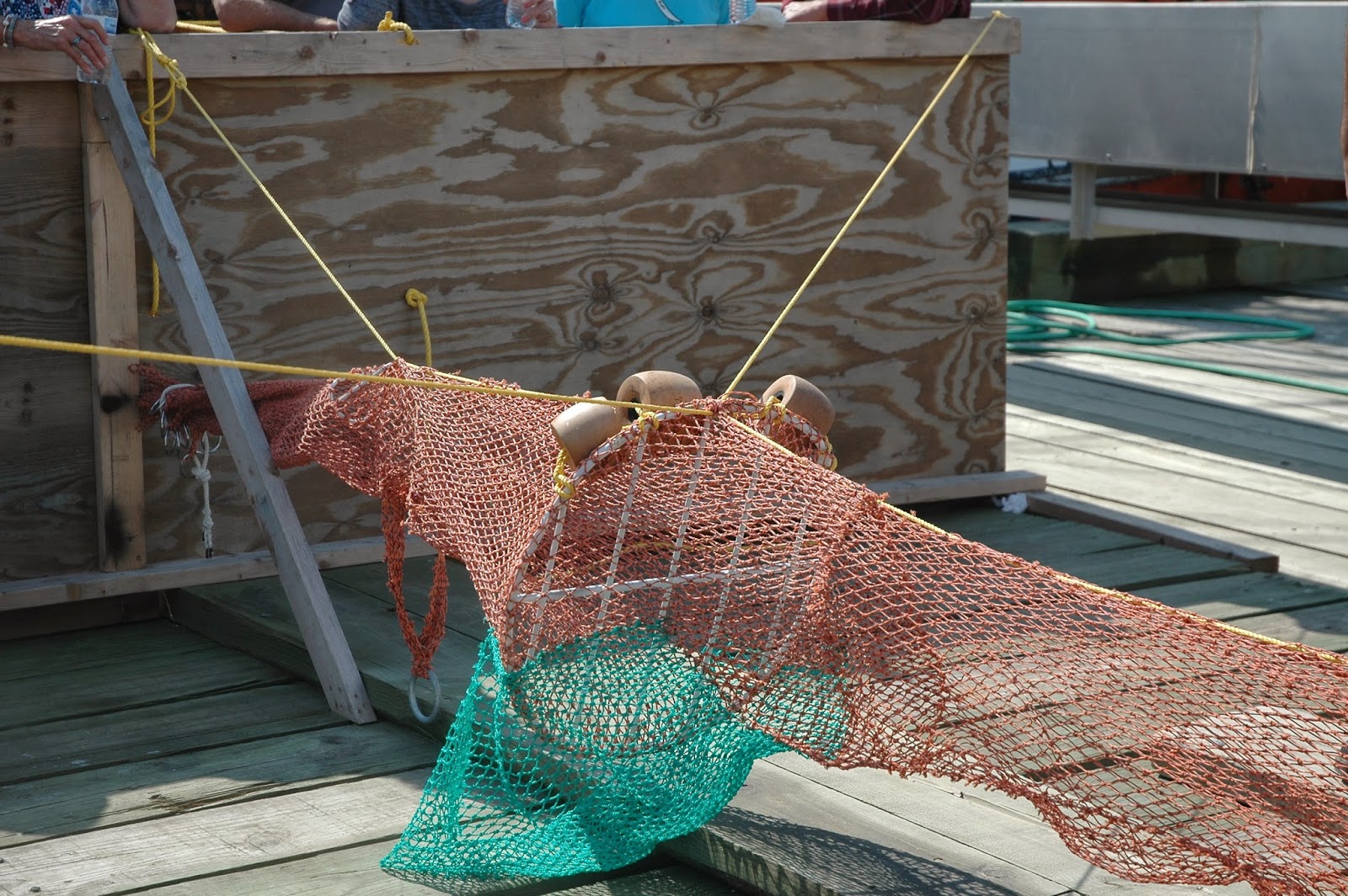At a tour of the Texas Gold Shrimp Company you can learn everything you ever wanted to know about wild-caught shrimp. Our co-park hosts, Jan and Steve Mondl, took the tour last month and gave it rave reviews. So, when friends, Ken and Terry Smeltzer came to Brownsville for a visit, we put it on the list. It was well worth the three plus hours we spent there, and as a bonus, the tour included a bowl-full of fresh cooked "wild-caught Texas shirmp".
Part one of the tour was held in a semi-enclosed hall. The group was made up of 85 people, most of whom were senior Winter Texans from all over the country. Added to the fun was chatting with folks from Wisconsin, Minnesota, Illinois, etc., and comparing winter weather. Obviously, New England won that race this year!
Texas Gold Coast Shrimp is a family business, started in 1979. In fact, the handsome man who provided us with the extensive information about this business, is the grandson of the company founder, and has worked at it since he was a kid.
After some explanations about what the tour included, we broke into two groups. One went out on the dock to learn about the actual process of catching and preserving the shrimp, the other half of the group stayed for a discussion of why everyone should insist on Wild-caught shrimp, along with a demonstration of how to easily peel the shell off of shrimp.
Only three, out of the 15 trawlers operated by Texas Gold, were at the dock that day. We were told that this time of year shrimping is much slower than during the summer.
A small model of the shrimp net was staked out on the deck and it was explained how the process works. The wide end is attached to heavy side boards that, with the aid of water pressure, hold the mouth of the net open. At several spots along the net, there are escape hatches that enable critters, other than shrimp, to escape. The shrimp are funneled into the tiny closed end of the net.
When the nets are brought up, the knotted rope at the top is open, spilling all the catch onto the deck of the boat. The knot is retied and the rig goes back into the water for another four hours of trolling.
The group moved onto the deck of the boat to hear about what kind of jobs are performed on a shrimp boat that is at sea for 60 to 90 days at a time. As soon as the nets are back in the water, the "headers", as the crew are called, begin de-heading all the catch that was dumped onto the deck. This is done, using the thumbs of both hands, to pop the heads off the shrimp. A tricky task because the little devils have a sharp barb on their heads that can pierce gloves and skin. The men sit on a short stool with their legs out straight, for four hours at a time.
The de-headed shrimp are gathered into a bucked, then placed in plastic mesh-like storage boxes. These boxes, measuring about 20" X 30" X four inches deep, are submerged in a solution of 32 degree water containing a mix of salt and a preservative, which coats the shrimp with ice, allowing the catch to be individually frozen. The trays are then placed in the boat's freezer.
Crew quarters on the boat
The Texas Gold Shrimp company hires the captains, who in turn, hire their own crew. When the boats come back to port, the captain is paid for the shrimp he brings in, then he divides it among the crew.
Part two of the tour shuffles the group back to the building, where we learn the facts about "Country of Origin" labeling, (which has enough loopholes to sail a trawler through), the percentages of wild-caught, vs farm raised shrimp, and the chemicals and antibiotics used in farm raised shrimp. There was a video, taken at the processing plant where the shrimp are sorted, sized and checked for quality control. Our host indicated that people who are allergic to shrimp are most likely allergic to the chemicals and the heavy doses of antibiotics used when shrimp are farm raised. Most of this technical information is available on their web site texasgoldshrimp.com.
Now the fun part begins. After showing the correct method of de-shelling a shrimp, a contest for the fastest sheller was begun.
Not a fair fight. He choose a senior, and one of the only under 50's in the group. Guess who won?
Then we all got a chance to give it a try.
Even Marlin gave it a try.
Now you know everything you ever wanted to know about shrimp harvesting.


























































